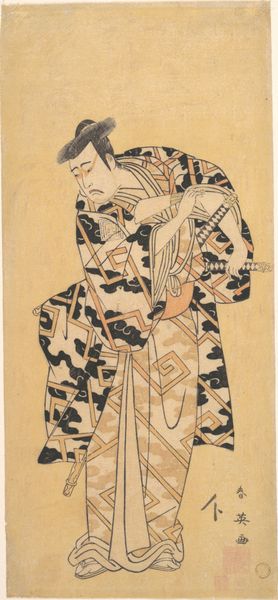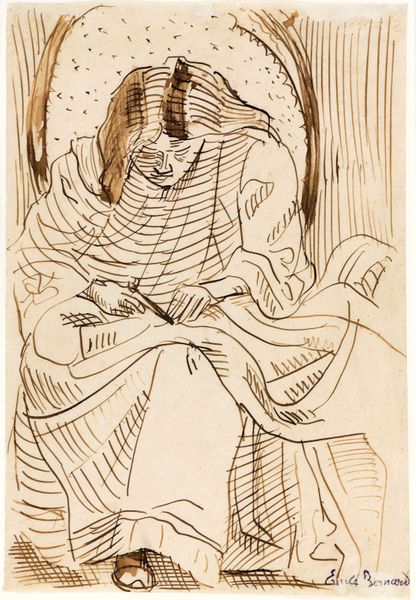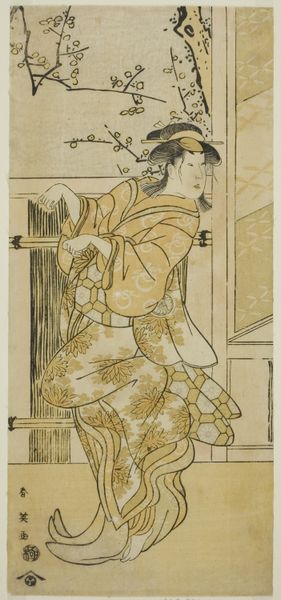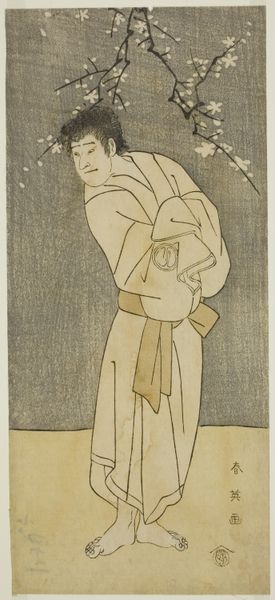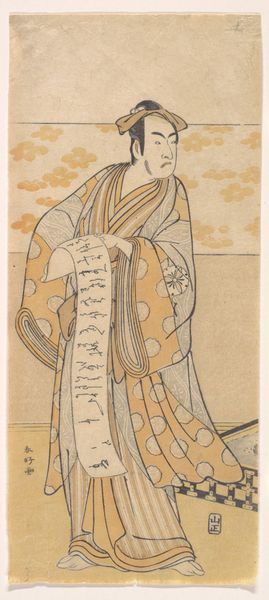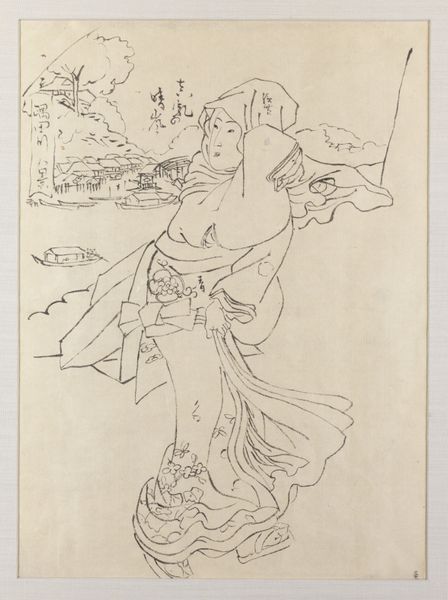
Young Lady and Iris Garden 1756 - 1829
0:00
0:00
painting, print, watercolor
#
portrait
#
painting
# print
#
asian-art
#
ukiyo-e
#
figuration
#
watercolor
Dimensions: 24 1/4 x 4 7/16 in. (61.6 x 11.3cm)
Copyright: Public Domain
Curator: Allow me to introduce “Young Lady and Iris Garden,” an Ukiyo-e print by Chōbunsai Eishi, dating sometime between 1756 and 1829. It's now held at the Metropolitan Museum of Art. Editor: It feels… fragile. The color palette is restrained, and the figure seems almost to blend into the background, like a fleeting memory. Curator: The subject is placed within the context of iris— a material associated with feminine virtue in Edo-period Japan and featured extensively in clothing patterns for women. It evokes purity and represents traditional craftsmanship and design from that era. Editor: The iris carries further significance. Historically, in Japan, it symbolizes protection, particularly for boys. Seeing it here associated with a young woman... does it hint at hopes for her safety, perhaps even a longing for strength in a society with defined gender roles? Curator: Ukiyo-e prints were often products of a collaborative process. One artisan would create the original design, another would carve the woodblocks, and another would actually print the image. Consider the accessibility this offered: multiple copies, more affordability, leading to wider distribution and consumption. Editor: It's also striking how she's depicted, eyes downcast, seemingly absorbed by something beyond our view. The Iris might guide the viewer's eye from top to bottom and invite reflections on the inner life during an era of shifting social mores. Curator: Absolutely. The line work itself bears examination. There's a delicacy in the way her robes fall, rendered with precision, yet implying a certain lightness and grace that speaks to the level of artisanship in block carving and print-making that circulated consumer items widely throughout Edo society. Editor: It's a reminder that even in what we might consider "high art," symbols often carry coded social meanings, speaking volumes about cultural values, beliefs and hopes within society. Curator: Thinking about the labor involved, and the materials selected, offers tangible entry points. It reframes what "art" meant during this era. Editor: Ultimately, this artwork feels like a quiet meditation—a window into both personal sentiment and the collective imagination during Eishi’s time.
Comments
No comments
Be the first to comment and join the conversation on the ultimate creative platform.


